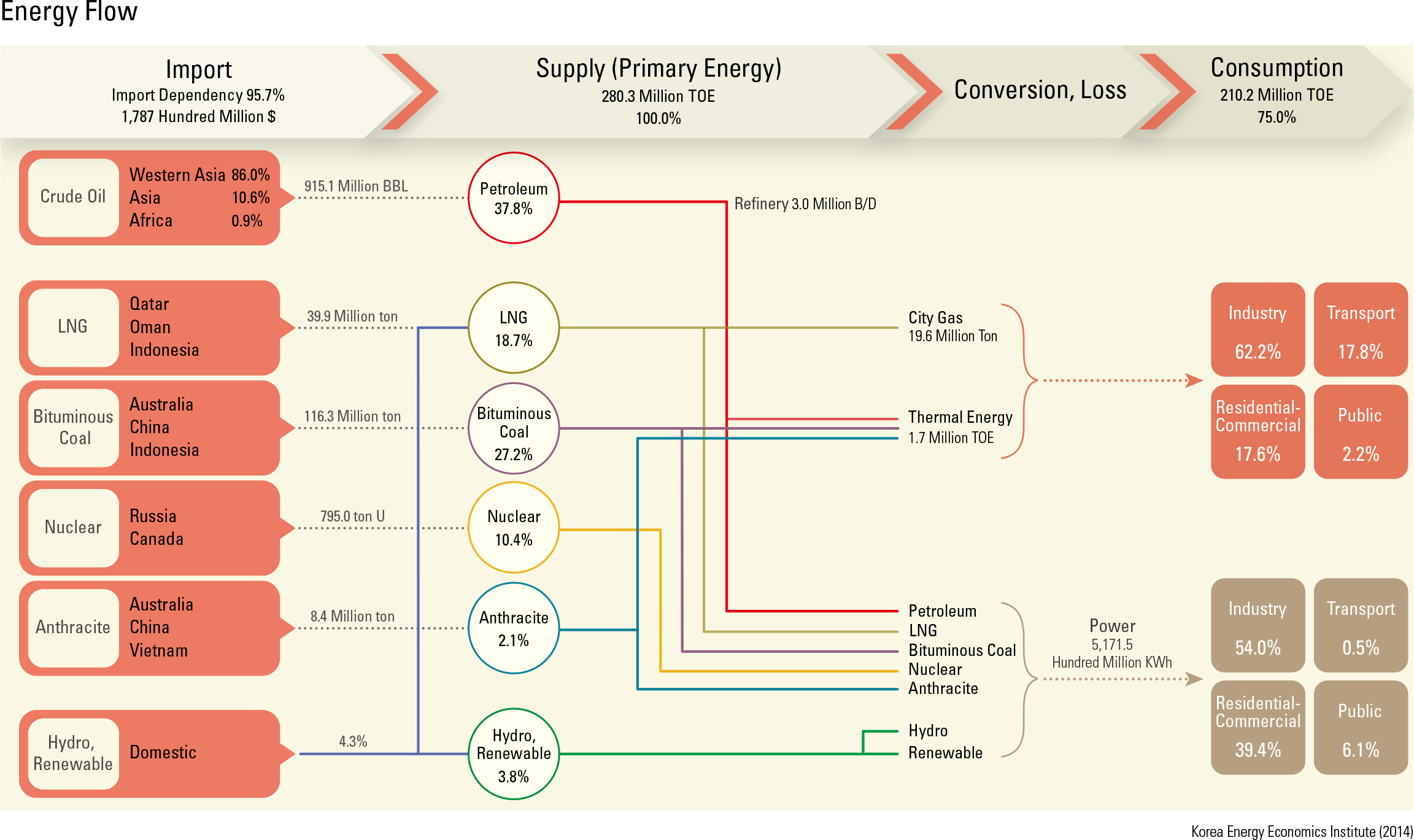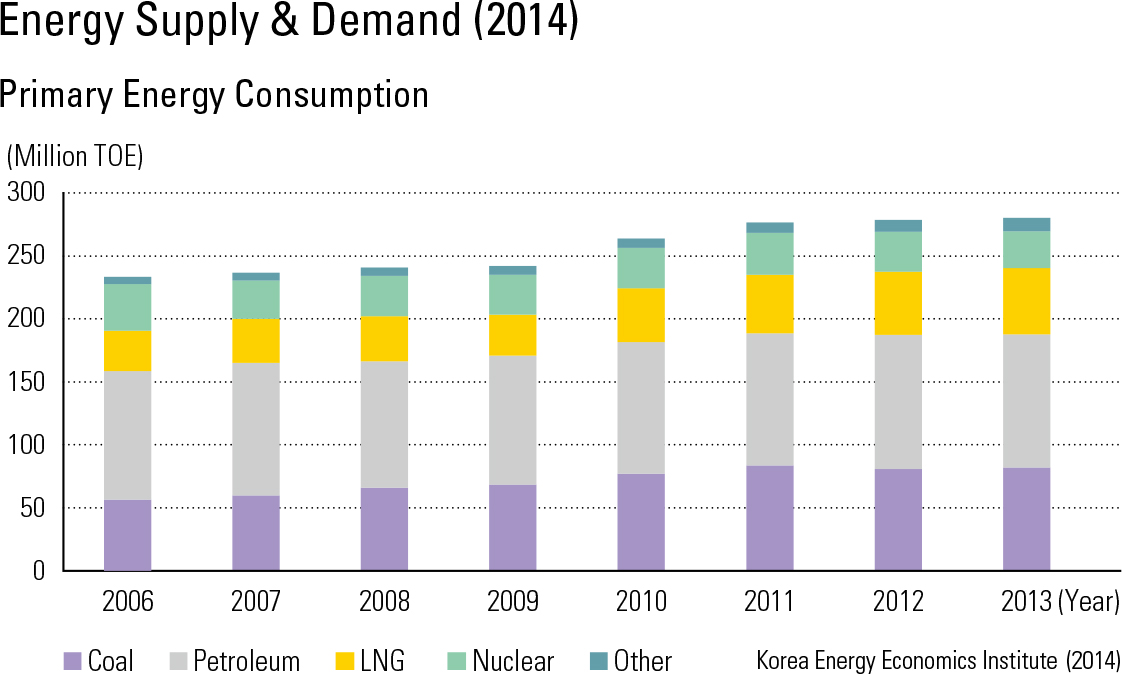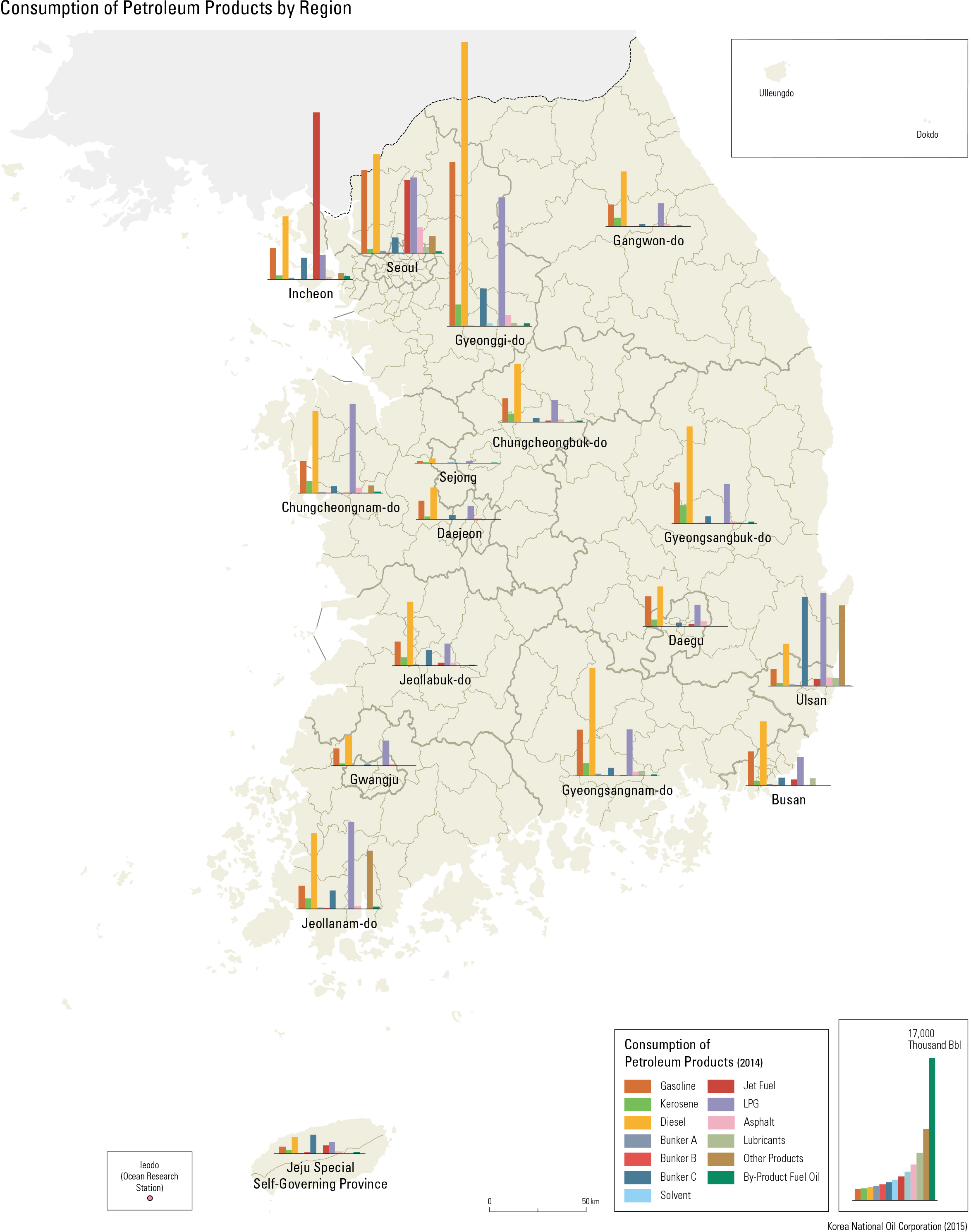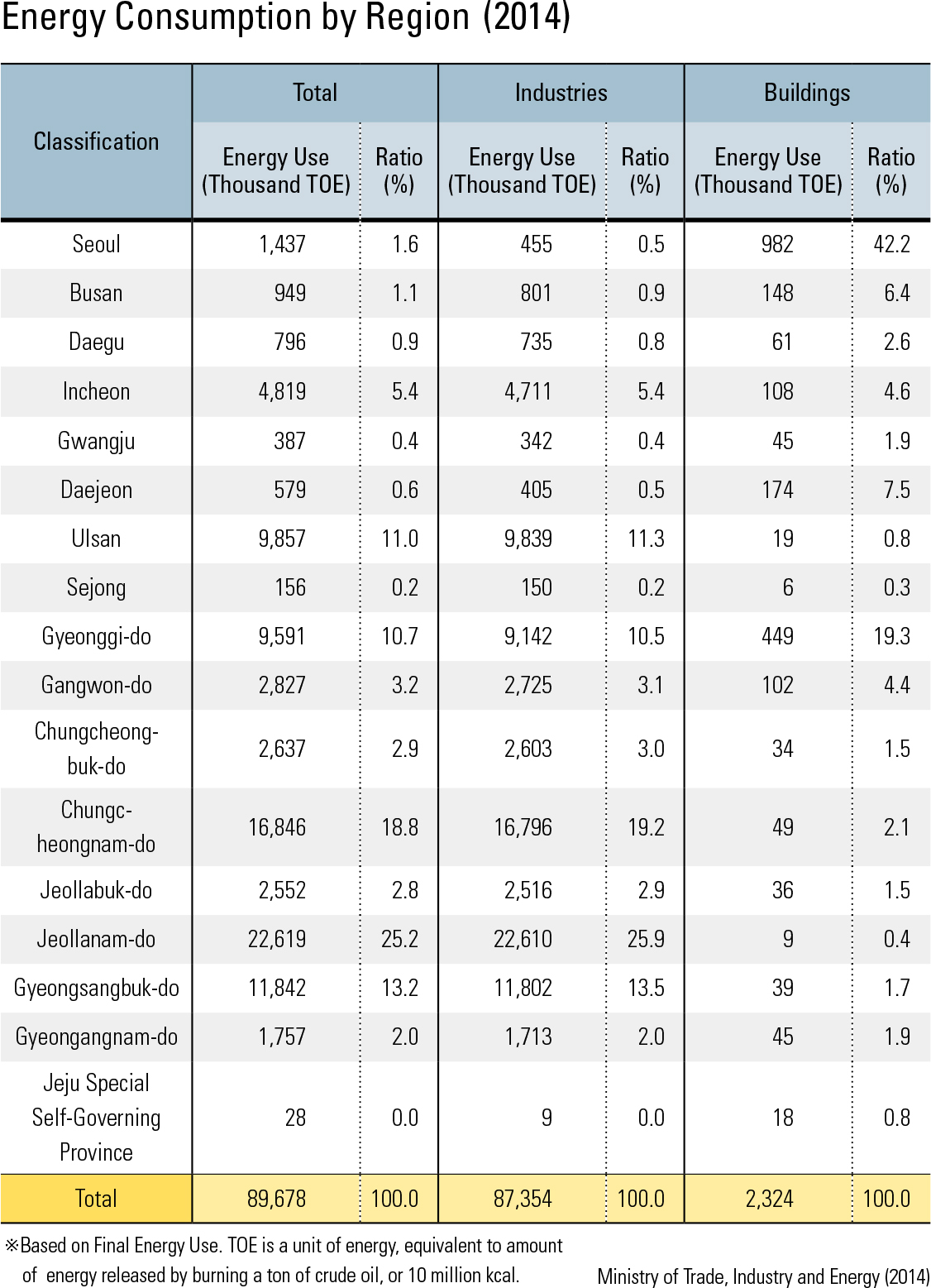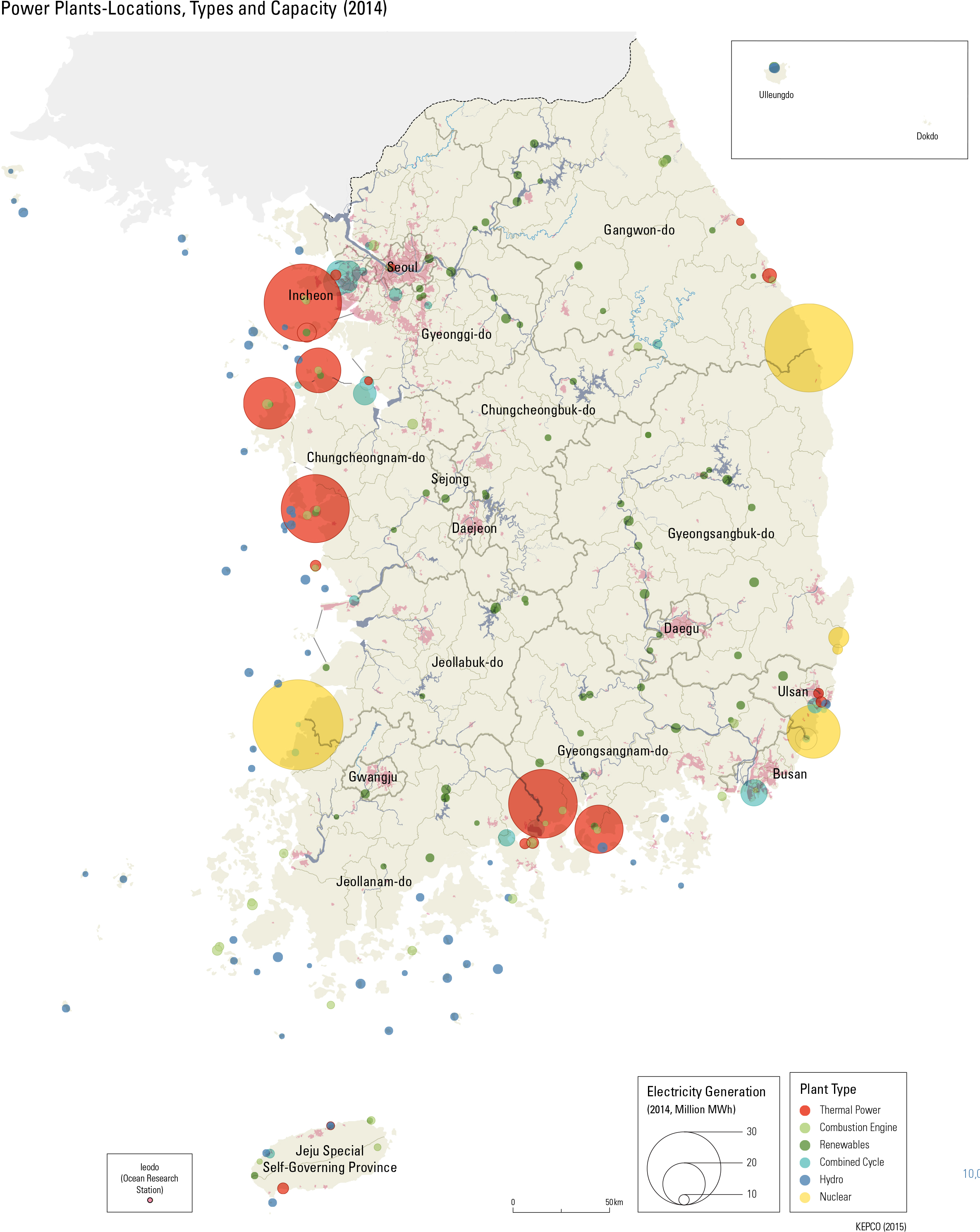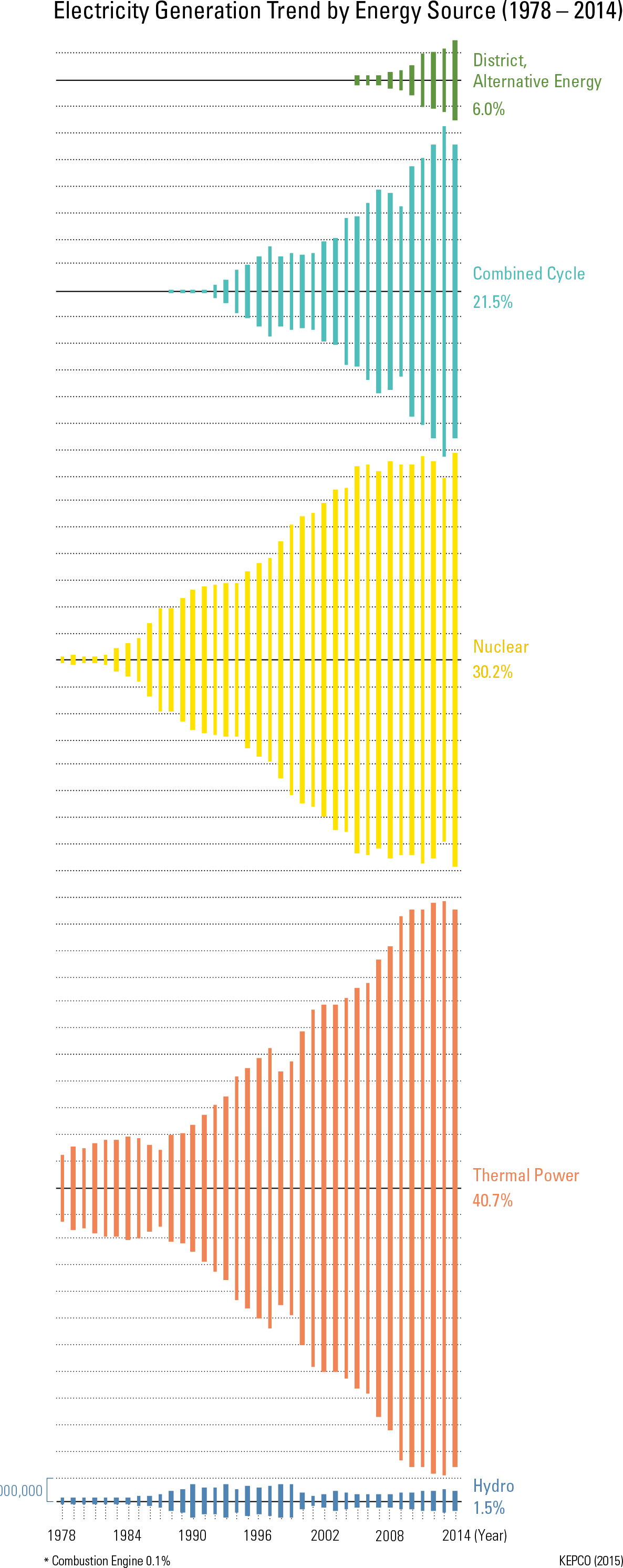English III
Korea relies on import for primary energy such as oil, liquefied natural gas, coal, and uranium, which are then converted to final consumer en- ergy such as natural gas, thermal energy, and electricity. The energy consumption amount (210 million toe [tons of oil equivalent]) in Korea in 2013 was at least five times more than 30 years ago. The dependency on import also increased, from 75.0% in 1981 to 95.7% in 2013. The most consumed energy source is oil (37.8%), and over 85% of oil is imported from the Middle East. Oil, bituminous coal (27.2% of consumption), and an- thracite (2.1%) are converted into thermal energy and electricity. Liquefied natural gas (18.7% of consumption) is converted into natural gas and electricity. Meanwhile, nuclear energy and hy- draulic/renewable energies account for 10.4% and 3.8% of the primary energy supply, respectively. The industrial sector consumes the largest amount (62.3%) of energy, followed by the residential and the commercial sectors (17.8%), the transporta- tion sector (17.8%), and the public sector (2.2%).
page_2 |
